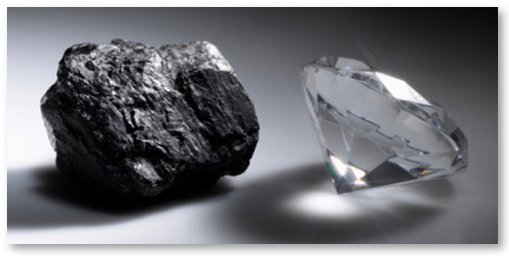
Have you ever wondered what journey a diamond takes before it ends up on your finger?
When they are uncovered from the depths of the earth, they look very different to how we see them in jewellery. And the qualities vary so much. It turns out only 15% of all diamonds mined, are good enough to be used in jewellery! The rest of the diamonds are not thrown away. There is a use for them too. Don’t forget, diamonds are the hardest natural substance in the world. As a result of this, only a diamond can cut a diamond. And that’s exactly what the other 85% are used for. Well, not all of them. But you get the gist. Diamond tipped drills, as an example, are another use for them, but that’s for another blog.
The difference between a piece of rough and a polished diamond is a time-consuming process. It requires a lot of planning, precision cutting and expert polishing. It’s an art. A skill which takes many years to learn and one which has historically been handed down from generation to generation. It’s not really the sort of thing you can learn in college. It’s all about learning on the job.
The first step is to determine what shape, when polished, will give us the heaviest diamond with the fewest inclusions. This is known as the planning process. And for diamonds of this size, it’s crucial. Having a slightly smaller diamond, yet one that’s purer, will increase the value considerably. The goal of the planner is to extract the maximum value from each piece of rough.
Once the planner has done his job, he passes all the info to the cutter. This process involves what we call cleaving or sawing. This has been done for years with a diamond-edged saw, nowadays we also use a laser, to carefully cut the diamond as detailed out by the planner. Following this, the diamond then undergoes the process of bruting. This involves two diamonds which are set on spinning axels and made to grind against each other. This helps shape each stone. After this is the most important step of brillianteering. This is the very precise and all-important placement of cutting all the facets. This helps determine the light performance and brilliance of the finished diamond. This is where we get the fire from! Finally, the diamond is polished, the facets are cut into the stone and all the surfaces are polished to perfection.
Once the diamond is inspected, it’s sent to a grading laboratory, such as the GIA, to be certified. There the diamond is officially weighed, and all the characteristics are noted down. The main ones being the colour, clarity, carat and cut. Many other details are also noted, and these are what determine the individuality of your diamond, and its value.
So, as you can see, the diamond that ends up on your finger in your engagement ring, has been on one heck of a journey. And no detail has been omitted.
Finally, I’m going to leave you with some diamond facts.
- Only one diamond in a million is 1 carat or heavier.
- The average diamond weight of an engagement ring is only 0.38ct.
- Only diamonds can scratch or polish diamonds.
- The word diamond literally means “indestructible”. It derives from the Greek word Adamas
- It takes 250 tonnes of earth to obtain a 1ct polished diamond.
- Five carats of diamonds weigh only one gram.
- And even though diamonds are the hardest natural substance on earth, with a firm blow, they can still break or be chipped.




